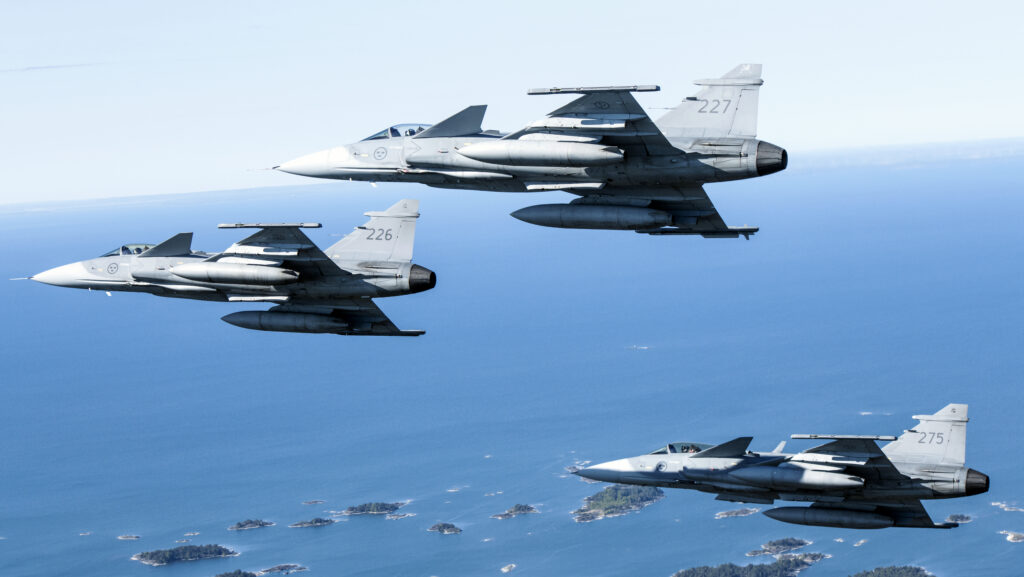Schematic diagram of expected integrated components configuration of LR-ASBM with HGV
The Defence Research and Development Organisation (DRDO) is advancing its capabilities in hypersonic technology, particularly through the development of a Hypersonic Glide Vehicle (HGV) intended for use as a payload in anti-ship ballistic missiles. This initiative is part of a broader strategy to enhance India’s strategic missile arsenal.
A Hypersonic Glide Vehicle is designed to be launched by a rocket to high altitudes, after which it glides towards its target at speeds exceeding Mach 5. Unlike traditional ballistic missiles that follow predictable trajectories, HGVs can manoeuvre during flight, making them significantly harder to intercept by modern missile defence systems.
Hypersonic Glide Vehicle can be mounted on any ballistic missile to destroy enemy targets. Ballistic missiles carry various payloads like MARV, MIRV & HGV. After launch the missile will follow a quasi ballistic trajectory, the heat shield is then jettisoned and the HGV will orbited and will work like a hypersonic vehicle to hit target by evading enemy air defence systems.
Indian LR-ASHM missile is similar in its operations. However, it’s unclear which ballistic missile was used as a booster stage by DRDO to mount this HGV. It is speculated that it could be Agni Prime, K4 or any other ballistic missile in India’s armoury. Details of the launch are expected soon.
Key Features of DRDO’s HGV Development
The HGV is expected to achieve speeds of up to Mach 10 and have a range of approximately 3,000 kilometers. This capability positions it as a formidable asset in India’s military arsenal.
DRDO is developing advanced guidance systems to ensure precision targeting, alongside thermal protection and control systems that enable manoeuvrability during hypersonic flight.
The HGV will be integrated into India’s existing ballistic missile frameworks, enhancing their effectiveness against naval targets and complicating interception efforts for adversaries.
The development of the HGV represents a significant leap in India’s strategic capabilities. By incorporating hypersonic technology into its missile systems, India aims to bolster its deterrence posture against regional threats, particularly from nations like China and Pakistan that are also investing heavily in hypersonic weapons.
DRDO’s Hypersonic Glide Vehicle will have Reaction Control System which help it perform extreme manoeuvres. And the HGV will be in Waverider configuration.
DRDO is developing Endothermic fuels for hypersonic applications. can be used in Scramjet & HGV. Usage of Endothermic fuel is one method for Actively Cooled Scramjet. Using heat exchangers Heat from the parts of the vehicle transferred to the Fuel.
Fuel grows hotter & eventually reaches a temp that triggers endothermic chemical reactions such as dehydrogenation & cracking in which hydrocarbons break into simpler units, the absorbed heat chemically converts the starting compound to other without increasing the temperature.
DRDO’s ongoing research includes the Hypersonic Technology Demonstrator Vehicle (HSTDV), which serves as a testbed for various hypersonic technologies. Successful tests of this vehicle have validated critical technologies necessary for the operational deployment of hypersonic systems. The completion of the HGV project is anticipated within the next few years, marking an important milestone in India’s defence capabilities.
Development of Indigenous Scramjet Engine For HGV

The scramjet engine plays a crucial role in enhancing the performance of Hypersonic Glide Vehicles (HGVs) by enabling efficient propulsion at hypersonic speeds. Here are the key contributions of scramjet technology to HGV performance:
Unlike traditional ramjets, which decelerate incoming air to subsonic speeds for combustion, scramjets allow combustion to occur at supersonic speeds. This capability enables scramjets to operate efficiently at higher velocities, typically between Mach 5 and Mach 10, which is essential for HGVs designed for rapid strike capabilities against targets.
Scramjets generate thrust by utilizing the high-speed airflow into the engine without the need for moving parts, such as turbines or compressors. This design reduces weight and mechanical complexity while providing a higher specific impulse compared to traditional jet engines, allowing HGVs to travel further on less fuel. The efficient use of fuel in scramjets enhances the range and operational effectiveness of hypersonic missiles.
Scramjets are optimized for hypersonic flight, making them ideal for HGV applications. They can sustain combustion at extreme speeds, which is critical for maintaining velocity during flight and achieving rapid target engagement. The ability to operate effectively in this speed regime allows HGVs to evade detection and interception, enhancing their strategic value.
The design of scramjet engines includes advanced thermal management systems that enable them to withstand the intense heat generated during hypersonic flight. This capability is vital for ensuring the structural integrity and reliability of HGVs during their operational lifespan. The use of endothermic fuels can further mitigate overheating risks, improving safety and performance.
Scramjet engines can be designed as modular systems, allowing them to be easily adapted for different types of hypersonic vehicles. This flexibility supports various military applications, including long-range strike capabilities and rapid response scenarios.
The integration of scramjet technology into HGVs significantly enhances their speed, range, efficiency, and operational capabilities, marking a substantial advancement in modern military aerospace technology.
DRDO’s work on hypersonic glide vehicles not only enhances India’s military technology but also plays a crucial role in shaping the future landscape of global military power dynamics.




















Discussion about this post